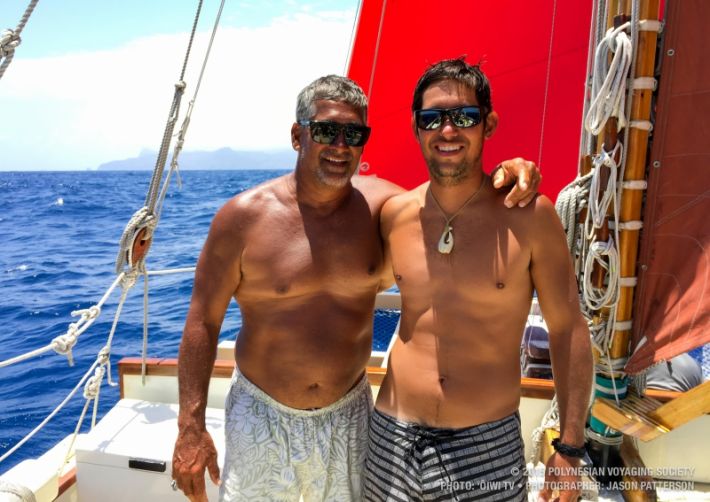Jan.
13,
2016
Contributed by
Communication Group Staff

Hōkūle‘a Master Navigator Bruce Blankenfeld and Apprentice Navigator Kaleo Wong are all smiles as they near St. Helena.

Apprentice Navigator Kaleo Wong searches for St. Helena during the recent voyage.

The island of St. Helena is seen off the bow of Hōkūle‘a.